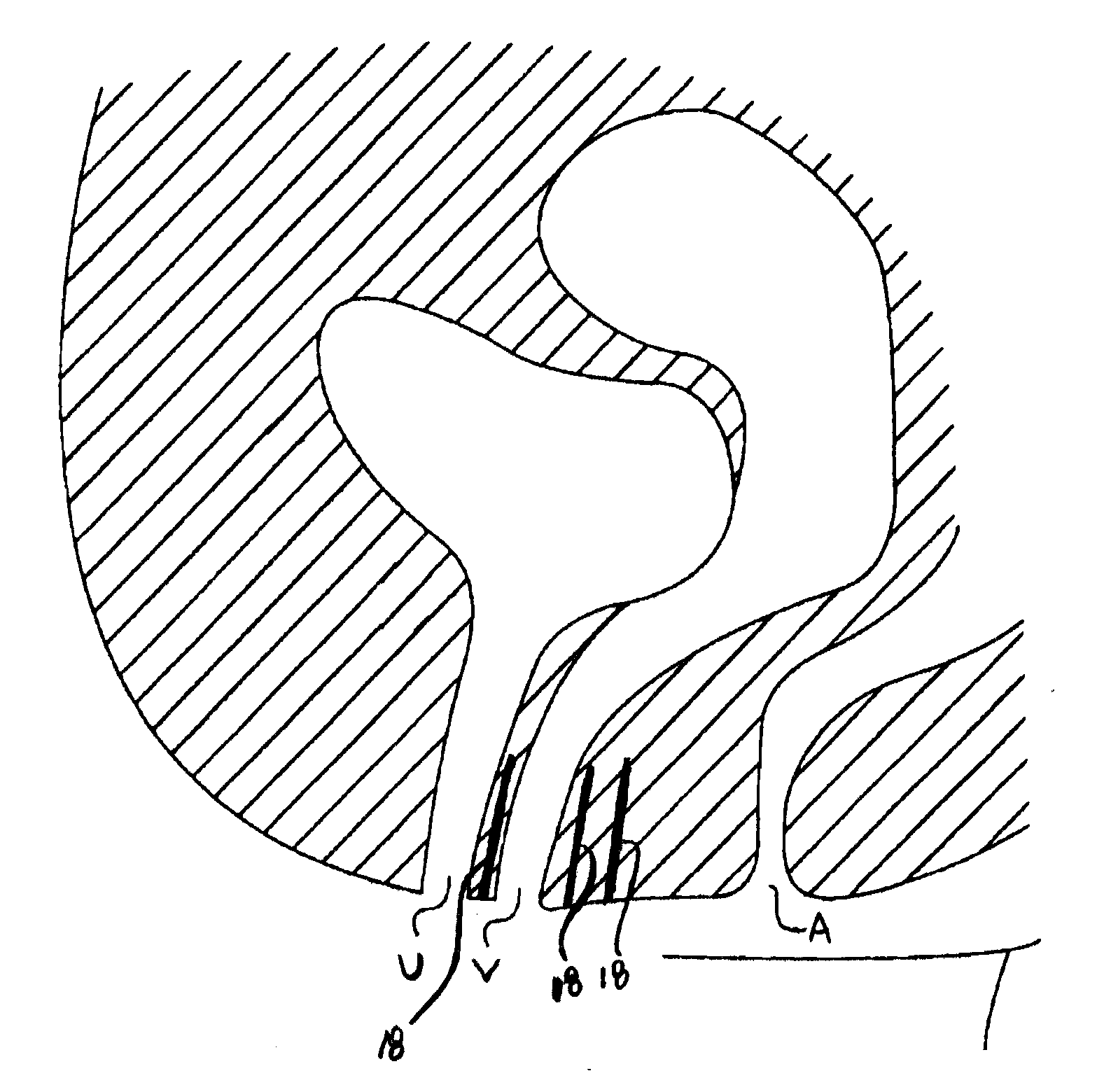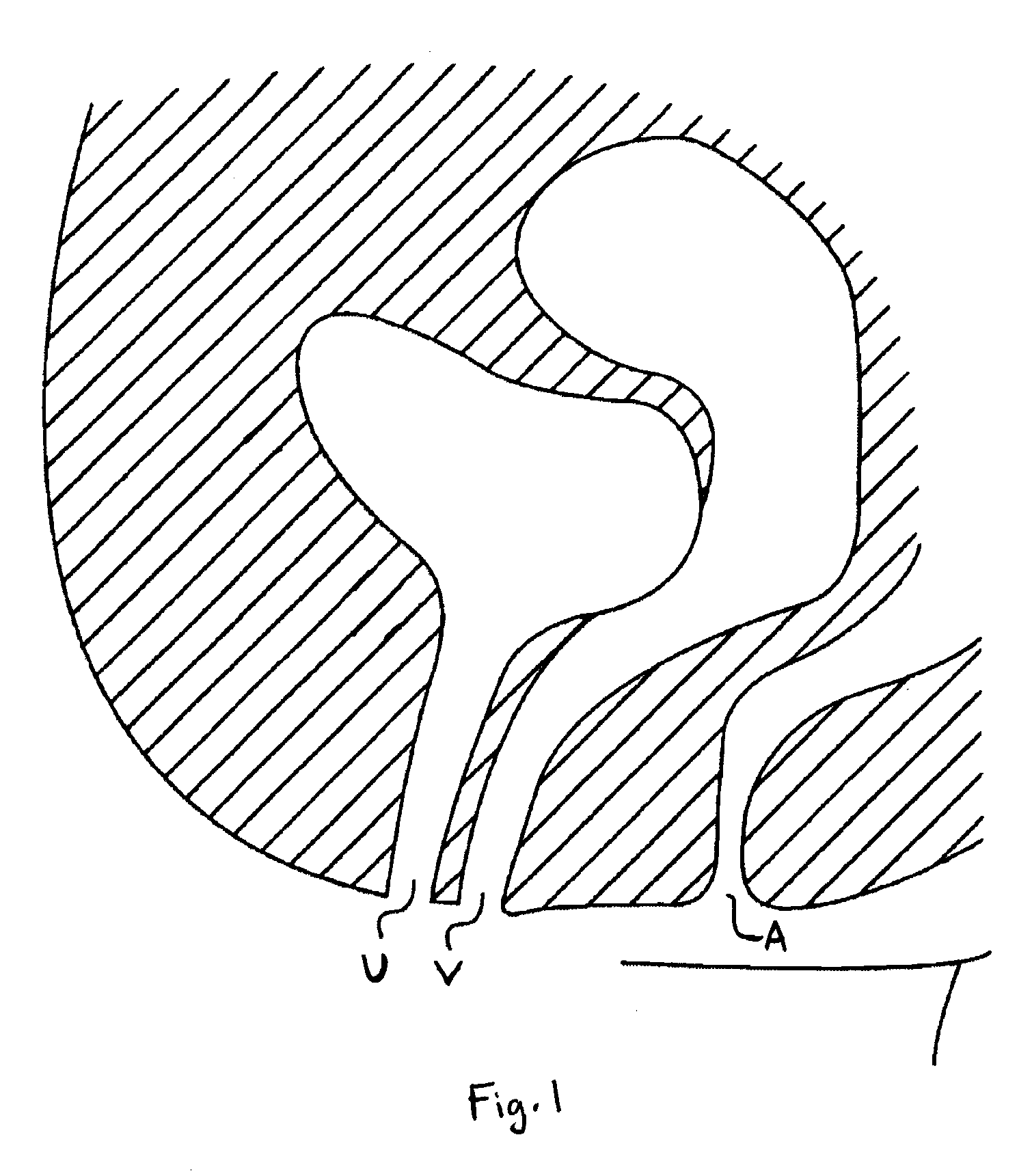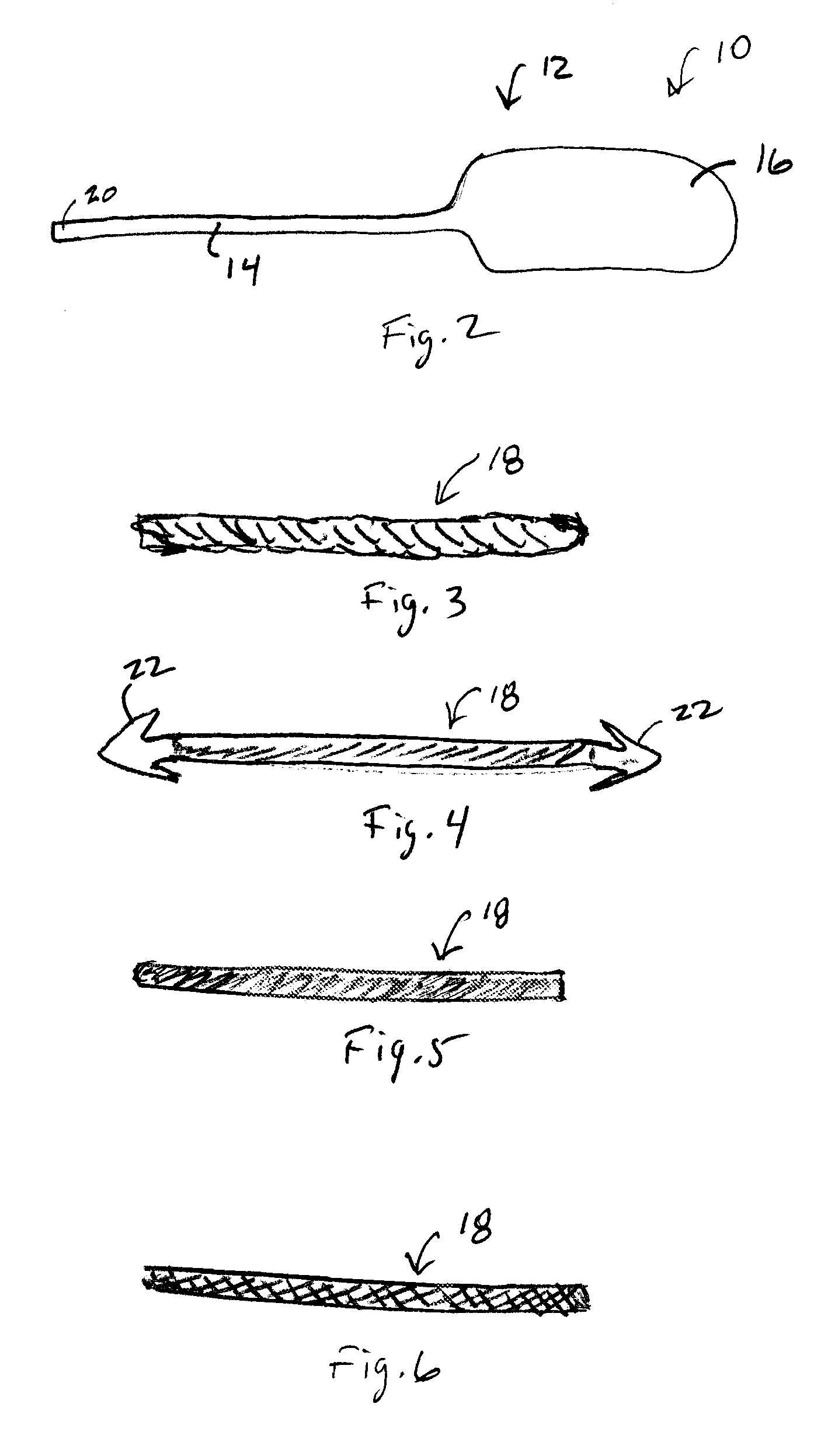Elongate Implant System and Method for Treating Pelvic Conditions
a technology of pelvic implants and implants, applied in the field of surgical methods and equipment, can solve the problems of affecting the normal pelvic support system, affecting the treatment effect, and affecting the treatment effect, and requiring long surgical procedure times
- Summary
- Abstract
- Description
- Claims
- Application Information
AI Technical Summary
Benefits of technology
Problems solved by technology
Method used
Image
Examples
Embodiment Construction
[0020]Referring generally to FIGS. 1-12, various embodiments of pelvic repair systems 10 are disclosed. One aspect of the present invention is an apparatus and method of treating urinary incontinence in males or females. In various embodiments, one or more implants or implant members are placed in strategically located positions to pull up or otherwise tighten tissue and / or muscle lateral to the urethra, or anterior or posterior to the vagina, to generally re-establish the original anatomical structure of the patient.
[0021]Structures or portions of the various embodiments detailed herein can be constructed of materials such as polypropylene, polyglycolide, poly-1-lactides, or other known biodegradable (re-absorbable) or non-biodegradable polymers. Further, growth factors or stem cells can be seeded or otherwise provided with one or more of the components of the devices to facilitate healing or tissue in-growth. In addition to introduction and deployment of the devices or components ...
PUM
 Login to View More
Login to View More Abstract
Description
Claims
Application Information
 Login to View More
Login to View More - R&D
- Intellectual Property
- Life Sciences
- Materials
- Tech Scout
- Unparalleled Data Quality
- Higher Quality Content
- 60% Fewer Hallucinations
Browse by: Latest US Patents, China's latest patents, Technical Efficacy Thesaurus, Application Domain, Technology Topic, Popular Technical Reports.
© 2025 PatSnap. All rights reserved.Legal|Privacy policy|Modern Slavery Act Transparency Statement|Sitemap|About US| Contact US: help@patsnap.com



